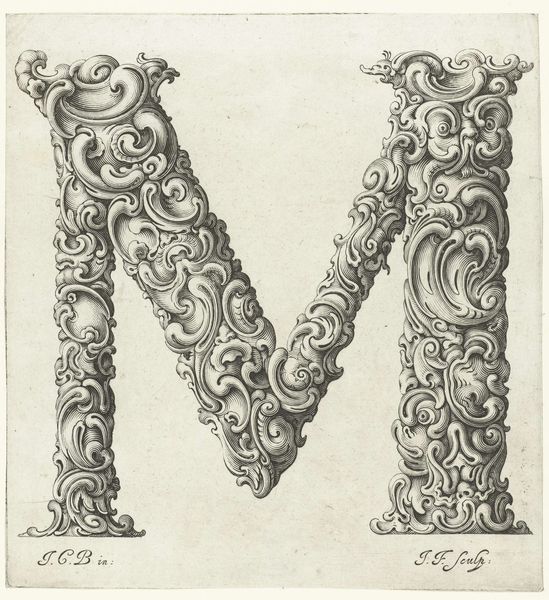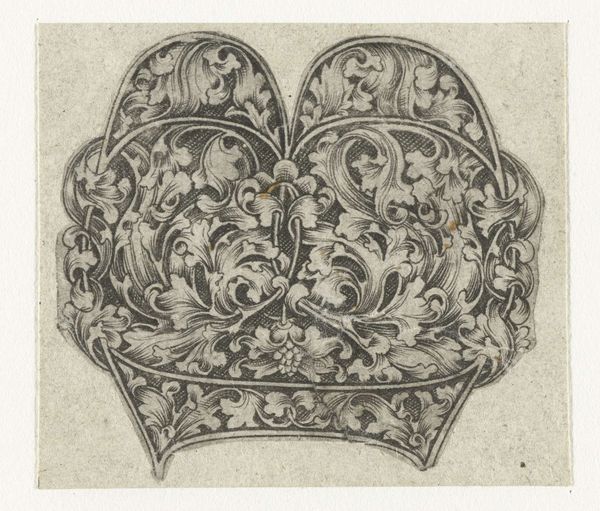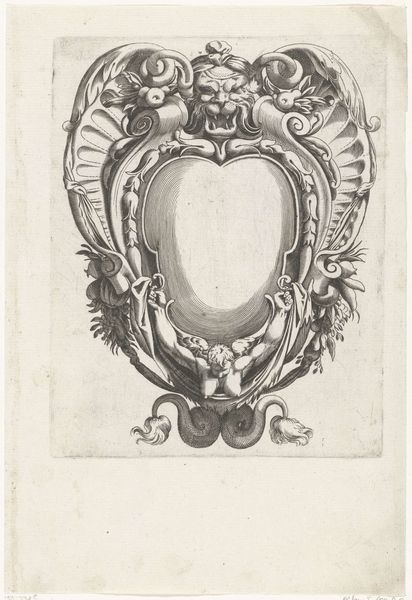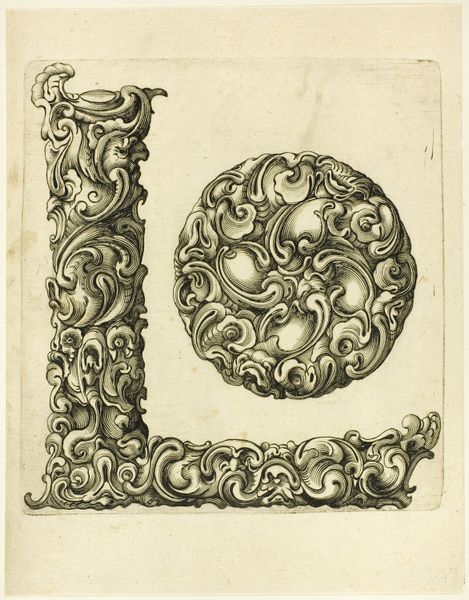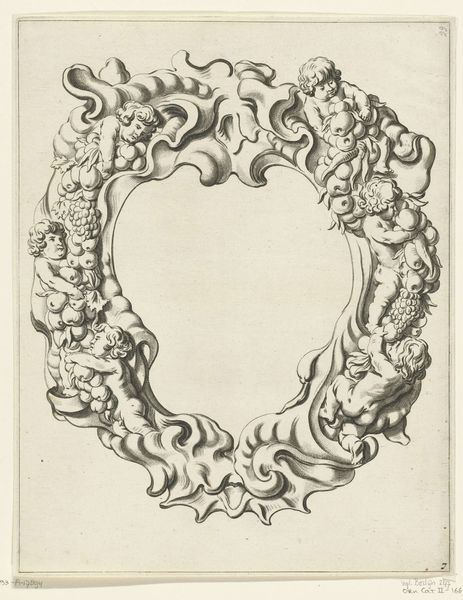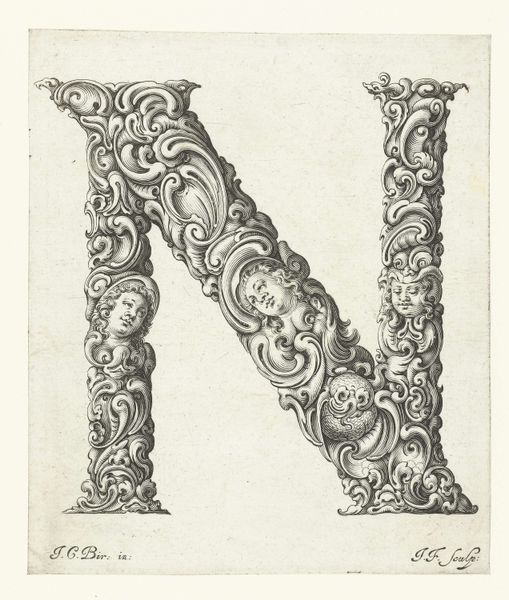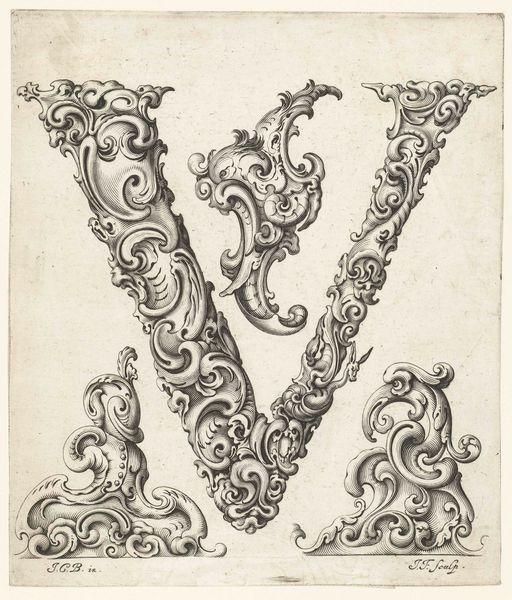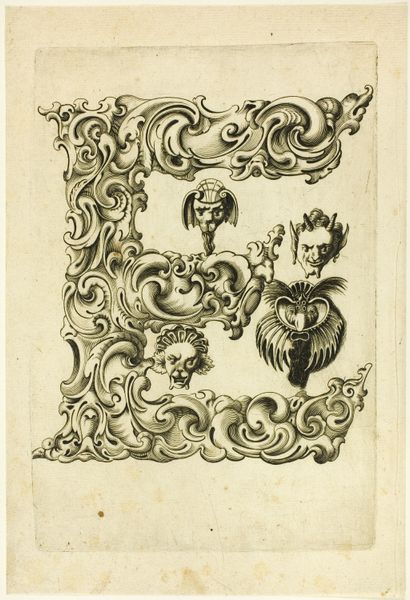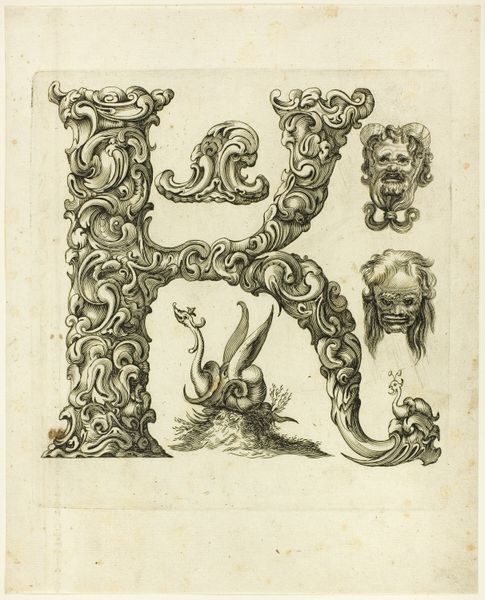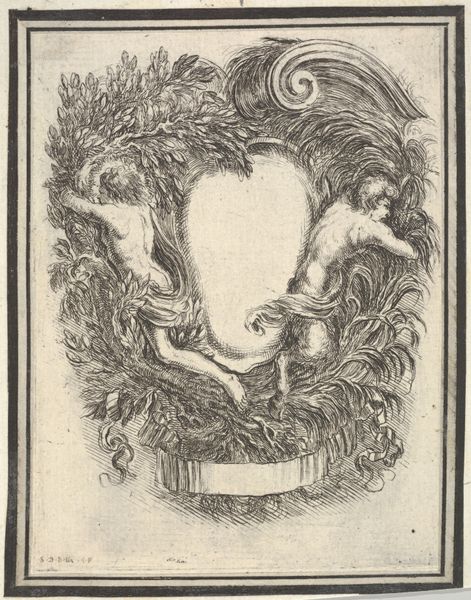
drawing, print, paper, engraving
#
drawing
#
baroque
# print
#
paper
#
form
#
engraving
Dimensions: 234 × 202 mm
Copyright: Public Domain
Curator: Peter Aubry’s "Letter M," an engraving dating back to 1630, part of the Art Institute of Chicago’s collection, presents us with an elaborate and intricate design. Editor: It feels incredibly opulent, almost dizzying. The level of detail is immediately striking. The monochromatic nature emphasizes the texture, doesn’t it? Curator: Precisely! Look at the masterful use of line – the way it creates depth and volume, transforming a simple letterform into a complex network of swirling foliage and grotesque masks. This embodies the Baroque aesthetic with its love for ornamentation. Editor: And those masks, positioned almost as afterthoughts alongside the "M," offer a strange sense of duality. Is this about the public and private self during the 17th century, perhaps? The formal grandeur of the letter contrasts oddly with those more intimate, almost unsettling facial expressions. Who was "M" in 1630? A monarch, merchant, or muse? Curator: The beauty of these ornamental letters lies in their pure form. The content of the letter itself is not relevant; rather it becomes a framework upon which to hang pure design. Notice how Aubry uses the rigid structure to build an intricate, almost organic form. It pushes against the discipline of the letter itself. Editor: I'd argue it does much more. These forms are not disconnected from their time; they become representative of societal forces. By layering grotesque and semi-human forms atop the "M," does it unveil the constructed, almost performative nature of power itself? Curator: An interesting thought. Yet I remain fascinated by the engraving technique itself, the meticulous labour required to create such a precise and elaborate image. The sheer technical skill elevates it beyond simple decoration. Editor: Perhaps it elevates it to a visual manifestation of control, both artistic and societal? These engravings were part of a larger project: fonts for the printing press that served political discourse. The letter “M”, opulent as it is, would be printed en masse across 17th century Europe. Curator: In its form and function, the "Letter M" invites reflection, doesn’t it? The artist's technical artistry is undeniable. Editor: Absolutely. Whether as an abstract exploration of form, or a cultural artifact embedded in power structures, the “Letter M” demands closer inspection of design and time.
Comments
No comments
Be the first to comment and join the conversation on the ultimate creative platform.
